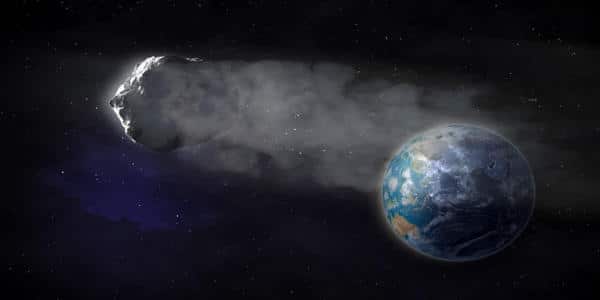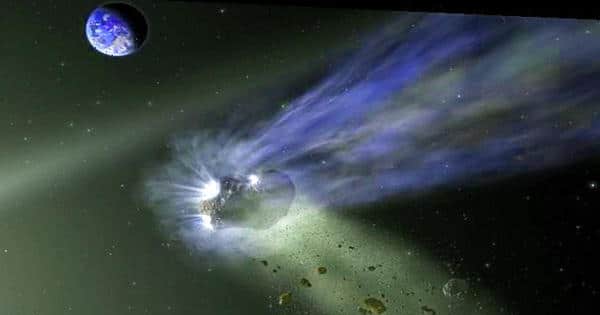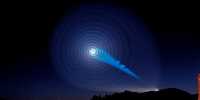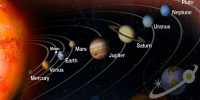As it becomes clear that comets like Catalina could have been an important source of carbon on planets like Earth and Mars during the early formation of the solar system, comet Catalina is helping to explain more about our own origins. An icy visitor from the outer reaches of our solar system slammed into Earth in early 2016. It was briefly visible to stargazers as Comet Catalina before slingshotting past the Sun and disappearing forever from the solar system.
The Stratospheric Observatory for Infrared Astronomy, or SOFIA, was one of the observatories that captured images of Catalina. That observatory is unique in that it is a telescope mounted on an airplane. When investigating the comet’s tail, SOFIA discovered a familiar element in the form of carbon.The
Stratospheric Observatory for Infrared Astronomy (SOFIA), NASA’s telescope on an airplane, was one of many observatories that captured a view of this comet, which appeared near the Big Dipper. SOFIA was able to detect a familiar fingerprint within the dusty glow of the comet’s tail using one of its unique infrared instruments: carbon. Now, this one-time visitor to our inner solar system is helping to explain more about our own origins, as it becomes clear that comets like Catalina could have been an important source of carbon on planets like Earth and Mars during the solar system’s early formation.
NASA researchers believe that comets like Catalina could have been an essential source of carbon on Rocky planets like Earth and Mars during the early formation of the solar system.
The Planetary Science Journal has published new findings from the SOFIA project, a collaboration between NASA and the German Aerospace Center. “Carbon is critical to understanding the origins of life,” said the paper’s lead author, astrophysicist, and professor at the University of Minnesota Twin Cities Minnesota Institute of Astrophysics Charles “Chick” Woodward. “Because we don’t know if Earth could have trapped enough carbon on its own during its formation, carbon-rich comets could have been an important source delivering this essential element that led to life as we know it.”
Because of their long orbits, they arrive relatively unchanged from their origins, making them essentially frozen in time. This type of comet allows scientists to learn about the early solar system, where comets originated. Carbon is an essential component of life on Earth. Researchers believe that Earth and other terrestrial planets in the inner solar system were so hot during formation that elements like carbon were lost or depleted.

Frozen in Time
Comet Catalina and others of its kind have such long orbits that they arrive on our celestial doorstep relatively unscathed after leaving the Oort Cloud in the farthest reaches of our solar system. This effectively freezes them in time, providing researchers with rare opportunities to learn about the early solar system from which they originate. SOFIA’s infrared observations revealed the composition of the dust and gas as it evaporated from the comet, forming its tail. Comet Catalina was discovered to be carbon-rich, implying that it formed in the outer regions of the primordial solar system, which held a reservoir of carbon that could have been important for seeding life.
While carbon is essential for life, the early Earth and other terrestrial planets of the inner solar system were so hot during their formation that elements such as carbon were lost or depleted. While cooler gas giants like Jupiter and Neptune may have been able to support carbon in the outer solar system, Jupiter’s massive size may have prevented carbon from mixing back into the inner solar system.
Primordial Mixing
So how did the inner rocky planets evolve into the carbon-rich worlds that they are today?
Researchers believe that a slight shift in Jupiter’s orbit allowed small, early comet precursors to mix carbon from the outer regions into the inner regions, where it was incorporated into planets such as Earth and Mars. Comet Catalina’s carbon-rich composition helps explain how planets that formed in the early solar system’s hot, carbon-poor regions evolved into planets with the life-supporting element.
“All terrestrial worlds are subject to impacts from comets and other small bodies carrying carbon and other elements,” Woodward explained. “We’re getting closer to understanding how these impacts on early planets could have triggered life.”
More observations of new comets are needed to determine whether there are many other carbon-rich comets in the Oort Cloud, which would lend credence to the idea that comets delivered carbon and other life-supporting elements to the terrestrial planets. SOFIA’s mobility as the world’s largest airborne observatory allows it to quickly observe newly discovered comets as they pass through the solar system.















